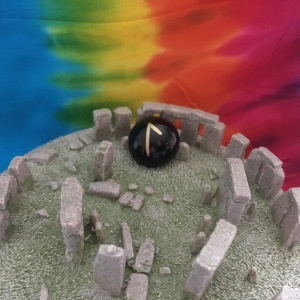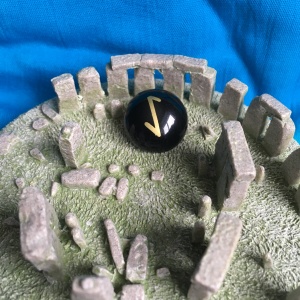
Sowelu is the runic symbol for sun and is connected to the Norse sun goddess Sunna/Sol.
Sol was the sister of the moon god Mani, and was charged with driving the chariot of the sun as punishment for her father naming her after the sun. Her chariot was pulled by her two horses Arvak (early riser) and Allsvinn (swift) and she rode with the legendary shield Svalinn which was held between her and the Earth below her so the world would not burn from her passing. As they travelled each day they were pursued by the wolf Skoll and legend says that on the rare occassion the wolf got close enought to nip at Sol, it would cause a solar eclipse.
Traditionally Sol was honoured as a goddess of protection, victory and healing, and these qualities have been given to the rune. Additionally, sun festivals were an important part of ancient Scandinavian life and rolling fire wheels down hills and lighting bonfires were often used to welcome the sun and give it power, giving the rune the qualtieis of celebration, recognition, and things being brought into the light.

 Laguz is the runic symbol for water or lake and is also believed to have connections to the Norse moon god Mani – a god associated with the movement of time, and also divination, witchcraft and the protection of both the living and dead.
Laguz is the runic symbol for water or lake and is also believed to have connections to the Norse moon god Mani – a god associated with the movement of time, and also divination, witchcraft and the protection of both the living and dead.

